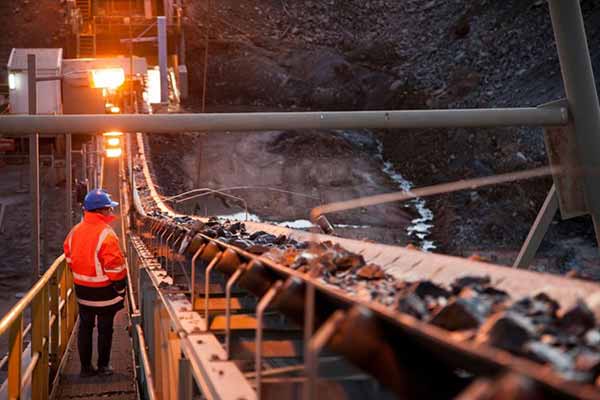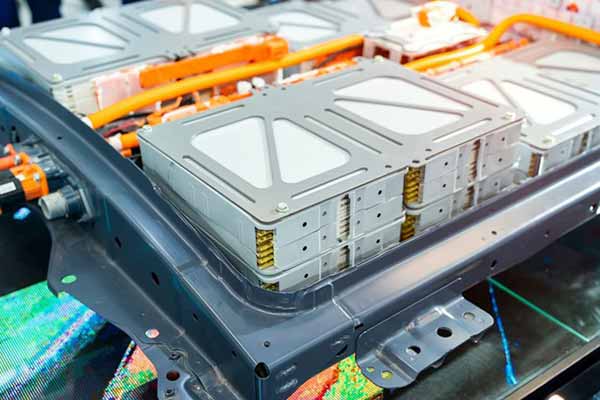A non-governmental organization (NGO) has released a study that shows the majority of global automakers have plans for EV production that fall far short of the necessary targets to achieve a reduction in carbon emissions from the transport sector that would help halt global warming. The report also noted that the manufacturers for the most part merely paid lip service to the Paris Agreement while doing what they could to prevent measures designed to reach the goals. Meanwhile, Australia’s newly elected Labor government has promised to significantly increase the country’s efforts to expand the use and production of renewable energy.
Policy Key Influence on Automakers’ Transition
A recent study showing most global automakers are way behind in the transition to EVs reveals that where regulations are tougher such companies are more likely to step up their efforts.
The study by the NGO Influence Map shows that apart from Tesla, the EV manufacturer, only Mercedes-Benz is on track to allocate a sufficient percentage of its production to EVs in the coming years, to help keep global warming at 1.5 degrees Celsius or less.
Influence Map is basing its calculations on the International Energy Agency (IEA) figures for changes required in the transport sector if global warming is to be kept within the Paris Agreement’s aspirational goal of 1.5 degrees Celsius.
The IEA data suggests that adequate decarbonization of the transport sector between now and 2030 would require around 58% of all new cars manufactured to use electric batteries.
For companies carrying out car production in both the European and U.S., researchers said the contrast between EV manufacturing projections in these markets is stark.
For example, in the EU, where regulations to curb carbon emissions are strong, Toyota plans to have around 50% of vehicles it produces there be electric by 2029, whereas in the U.S., where regulations are much weaker, the company has plans for only 4% of its production to be electric.
Likewise, more than 60% of Ford’s vehicles originating in Europe will be electric by 2030, which is almost double the percentage of EVs the company has plans to produce globally overall.
The study’s authors also point out that while paying lip service to the goals of the Paris Agreement, the majority of automakers have worked to push back against the needed changes for the energy transition.
The percentage of global EV production by Toyota, Honda, and Nissan is expected to be well below 25% of their total planned production. Hyundai and Renault do a little better with planned production of EVs set between 27% and 31% of their overall manufacturing output between now and 2029.
Volkswagen, Stellantis, and BMW have plans for between roughly 35% and 45% of their production to be EVs over the next seven years.
The combined total percentage of EVs manufactured by automakers as part of their overall global output will, therefore, be about 32% between now and 2030. For automakers to reach the targeted output of EVs as a percentage of global vehicle production, it would require them to increase their production of electric vehicles by 80%.
Aussie Labor Party Has Ambitious Renewable Energy Plans
Australia’s newly elected government promises that it will develop the country’s renewable energy sector to make it a superpower in that domain, having just won the country’s national elections.
The Labor party, unlike the previous conservative government, says it will prioritize ambition to tackle climate change, which was a key issue in this election. To do so, it says it’ll follow through on the promises it made to cut Australia’s emissions by over 40% between now and 2030, relative to 2005 levels.
The previous government had promised a reduction of just under 30%, viewed as too little by most other countries.
Among the slate of promises that would help to reduce emissions are tax breaks on electric vehicles, and billions of dollars in financing offered on very favorable terms to encourage the building of transmission infrastructure to support renewable energy projects.
The Labor party has also promised to establish a baseline of allowable emissions for its energy, materials, and mining sectors, to ensure the country achieves net-zero by 2050. However, it has toned down its rhetoric about closing down coal mines and gas plants, which employ large swaths of the Australian population, after losing the 2019 elections.
At the same time, members of the party were also giving mixed signals, with one senior politician expressing great enthusiasm for the petroleum sector that provides many jobs and brings in billions of revenue for the country.
The new government may also face challenges with implementing some of its climate-friendly policies because of financial constraints, and it will likely be under pressure to increase its climate ambition from other parties that won seats in the election and that have set even bigger targets.
Australia is among the world’s top exporters of coal and gas.
However, over the last few years it has experienced severe climate-related natural disasters. As a result, several independents campaigned on a climate change platform during this election. These independents and the Greens party gained significantly more seats this time around.
The independents and the Greens are pushing for a greater reduction in emissions than that proposed by Labor, with the Greens advocating for cuts as high as 75% by 2030 relative to 2005 levels, and an end to coal mining and coal plants.
EV Raw Materials Shortage Could Slow Sales
Russia’s invasion of Ukraine has also had an impact on the availability of raw materials for building electric vehicles.
Cobalt, lithium, and battery-grade nickel are essential for building EVs and both the pandemic and the war in Ukraine have seriously hampered the global supply chain for these commodities. Further, Russia is the largest global supplier of battery-grade nickel.
As a consequence, shortages of these important minerals have become a serious issue for EV manufacturers that are now paying significantly higher prices for them. Automakers and experts are therefore urging that governments invest much more heavily in mining of these minerals to ensure the continued growth of the EV market.
Twice as many electric cars were sold in 2021 than in 2020, but analysts warn that if the shortage of minerals continues, there may well be a slowdown in the EV market since there’ll likely be an increase in the price of the vehicles.
The number of EV models available globally last year grew to 450 from 90 in 2015, and most countries hope to see much higher sales figures for EVs in the coming years. Last year, more than two million electric cars were sold in Europe, whereas in the United States, around 650,000 EVs were sold.
Australia’s new Labor government has indicated it is eager to increase its mining of the minerals used in EV production; the country currently produces more than half of the world’s extracted lithium.
Lithium mining projects have not grown in number as expected in light of the increased demand, and prices for that mineral have shot up by almost 900% within the past two years.
Analysts say if the shortage issue isn’t addressed, the price of an EV battery could increase by as much as $3,000 within the next few years, and have therefore revised downward their projections for growth in the sales of EVs by the year 2026.
Additional Funding for Africa’s Universal Energy Facility
The Universal Energy Facility (UEF), established in 2020 to speed up access to energy on the African continent, has received additional funding through its partnership with the Global Energy Alliance for People and Planet (the Alliance).
The Alliance is making $50 million in funds available to the organization responsible for the UEF. Money from the fund will be used to further the facility’s work supporting the deployment of renewable energy solutions in the form of microgrids.
Organizations providing African consumers with the microgrids, along with verification of the end-user connections, receive incentive payments from the UEF. While the UEF currently operates in only three countries, it will use the funding from the Alliance to expand its operations to more countries in Africa.
Some of the funds will also be used to develop solar projects, and further the global energy agenda while cooperating with decision-makers in the public and private sector.
Anglican Church in Barbados Goes Green
The Barbados Diocese of the Anglican Church has entered into a contractual agreement with one of the island’s energy firms to install photovoltaic systems on several church properties.
The church said it wished to do its part in helping Barbados achieve its goal of 100% renewable energy use by 2030. The project also harmonizes with the church’s mission to be good environmental stewards.
The Barbados government has said it hopes to produce 800 megawatts of renewable energy annually from a mix of different renewable sources including wind, solar, and biogas.
Brought to you by energysavings.com
All images licensed from Adobe Stock.
Featured image:



